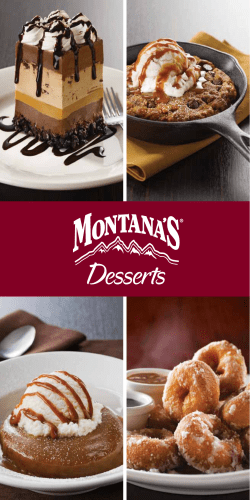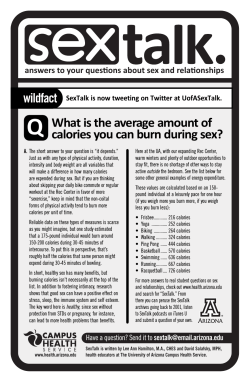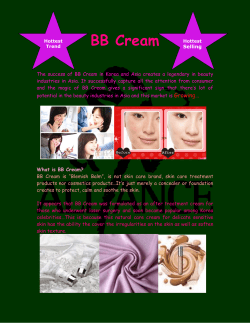
STAT 303-202 SAMPLE EXAM-III SUMMER II 2009 Instructions Name:___________
STAT 303-202 SAMPLE EXAM-III SUMMER II 2009 Name:___________ UIN: _____________ Instructions 1. Please do not open the exam sheet until told to do so. 2. Fill out your name, section, form and UIN. 3. Sign on the Scranton where it says “SIGNATURE”. By doing this you are agreeing to the AGGIE HONOR CODE: AN AGGIE DOES NOT LIE, CHEAT, OR STEAL, OR TOLERATE THOSE WHO DO. 4. You have 60 minutes for this exam. 5. There are 21 questions and points are indicated for each question. 6. You can use a calculator but not phone during the exam. 7. Don’t use ink on Scranton, use the required pencil. 8. On completion, place the Scranton inside the exam sheet for submission Good Luck!!! 1.) The weights of baskets of strawberries should be normally distributed with mean 18 oz and standard deviation 2 oz, but the machine that loads the baskets actually is loading them with a mean of 19 oz. You take a sample and find a p-value which is LARGER than your desired α level. Which of the following statements is TRUE? A.) You made a Type II error: you rejected the null hypothesis when you shouldn’t have. B.) You made a Type I error: you rejected the null hypothesis when you shouldn’t have. C.) You didn’t make any error at all; you made the correct decision about whether to reject. D.) If you increased your sample size, it would increase the power of the test. E.) If you increased the probability of making a Type I error, then power would decrease. 2.) Psychologists often measure the amount of time it takes rats to find their way through mazes. One psychologist believes that playing rap music to rats will increase the amount of time it takes the rats to complete the maze. The mean time for rats who have not had music played to them to complete the maze is 20 seconds; the researcher plays rap music to a sample of 50 rats and finds that their average time to complete the maze is 22 seconds. What are the psychologist’s null and alternative hypotheses? A.) Ho: μ = 22 Ha: μ > 22 B.) Ho: X = 22 Ha: X > 22 C.) Ho: μ = 20 D.) Ho: μ = 20 Ha: μ < 20 Ha: μ > 20 E.) Ho: X = 20 Ha: X > 20 3.) Sue is trying to estimate the mean time for rats to go through a new maze that she created. The standard deviation for times to go through similar mazes is σ = 2 seconds, and she thinks that the standard deviation for her maze will be similar. She wants to estimate the time to go through her new maze to within 1 second with 95% confidence. How large a sample does she need to take? A.) 15 B.) 16 C.) 10 D.) 26 E.) 11 4.) The calcium level in the blood of healthy young adults varies with mean 9.4 mg per deciliter and standard deviation 0.4 mg per deciliter. A clinic in rural Guatemala measures the blood calcium level of 159 healthy pregnant women at their first visit for prenatal care. The mean blood calcium level of the Guatemalan women is X=9.44 . Is this an indication that the mean calcium level in pregnant women from Guatemala is different from 9.4? Test the hypotheses at α=0.05: Ho: μ = 9.4 Ha: μ ≠ 9.4 Find the p-value for the test, and make your conclusions. A.) 1.7924 and we don’t have enough evidence to say that the mean calcium level for Guatemalan women is different from 9.4. B.) 0.2076 and we don’t have enough evidence to say that the mean calcium level for Guatemalan women is different from 9.4. C.) 0.2076 and we can conclude that the mean calcium level for Guatemalan women is different from 9.4. D.) 1.2609 and we can’t conclude that the mean calcium level for Guatemalan women is different from 9.4. E.) 0.1038 and we don’t have enough evidence to say that the mean calcium level for Guatemalan women is different from 9.4. 5.) Suppose that a weight is known to weigh 0.30 grams, but students’ measurements are not exactly accurate; in fact, they vary according to a normal distribution with mean 0.30 and standard deviation 0.041. Dr. Obsessive requires his students to measure things 10 times and report the average of their 10 measurements. In Dr. Obsessive’s class, Julie needs to create a 99% confidence interval for the true mean weight. The average of her 10 measurements is 0.303. What is her confidence interval? Does it contain the true mean? A.) (0.2696, 0.3364); Yes B.) (0.2696, 0.3364); No C.) (0.2666, 0.3333); Yes D.) (0.2666, 0.3333); No E.) (0.2776, 0.3284); Yes 6.) In a hypothesis test for Ho: μ = 3 against the alternative Ha: μ ≠ 3, in a sample of 14 people (the experimental units) a t-statistic of 3.816 was found. What is the range for the p-value in this test? A.) 0.0025 < p-value < 0.001 B.) 0.001 < p-value < 0.0025 C.) 0.002 < p-value < 0.005 D.) 0.005 < p-value < 0.02 E.) 0.01 < p-value < 0.05 7.) A marketing manager wants to know whether the average price of all history texts sold has increased since the year 2000. He decides to test the null hypothesis Ho: μ1 = μ2 against the alternative Ha: μ1 < μ2, where μ1 is the mean price of textbooks in 2000 and μ2 is the average price of history textbooks so far this year. The sample average of the textbooks that he has inventoried for this year comes to $59.27, while the average price of textbooks he sampled from 2000 is $53.55. He found a test statistic of -2.97, leading to a p-value of 0.0022. What is the meaning of the p-value in this scenario? A.) The probability of finding a test statistic of 2.97 or smaller assuming that the price in textbooks is the same now as in 2000 is 0.0022. B.) The probability of finding a sample average of textbooks of $59.27 or smaller just by chance assuming that the price in textbooks has not increased is 0.0022. C.) There is a 0.22% chance that history text books have not increased in price, assuming that we sampled from two populations with equally priced history books. D.) If we repeatedly sampled from the two populations of textbooks of these two years, assuming that the populations had equal means, the probability of rejecting the null is 0.0022. E.) 0.22% of the time, we would reject the hypothesis that the cost in textbooks has not increased when the cost of textbooks actually has increased. 8.) Suppose I wished to test whether the proportion of red M&M’s in bags today is equal to the proportion of red M&M’s in bags produced before the blue M&M’s were added and the tan M&M’s were taken out. What assumptions would I need to meet in order to use the methods we learned in class? A.) X should be normally distributed. B.) σ2 should be known. C.) nπ ≥ 10 and n(1-π) ≥ 10 D.) n ≥ 30 E.) Two of the above must be met. 9.) Suppose you tested the null hypothesis Ho: μ1 = μ2 against the alternative Ha: μ1 ≠ μ2 and got an average difference in means of 0.5682 with a corresponding p-value of 0.0432. If you were to create a 95% confidence interval for the difference between the two means ( μ1 - μ2) using the same data, which of the following would be true? A.) I’m not sure whether the confidence interval would include positive numbers or negative numbers, since I don’t know the value of the test statistic. B.) Under repeated sampling, 95% of the time the confidence interval for the difference in means would include 0.5682. C.) The confidence interval would include 0, since 0.0432 < 0.5682. D.) The confidence interval would not include 0. E.) Two of the above are true. 10.) Suppose you wanted to find out whether there is a difference between the proportions of people 55 and over who voted for an increase in Social Security taxes and the proportion of people under 55 who voted for it. What would your null and alternative hypotheses be? (Here π is for population and p is for sample.) A.)Ho: X=55 Ha: X≠55 B.) Ho: π1 = π2 Ha: π1 ≠ π2 C.) Ho: π1 – π2 = 55 Ha: π1 – π2 ≠ 55 D.) Ho: p1 – p2 = 0 Ha: p1 – p2 ≠ 0 E.) Ho: μ1 = μ2 Ha: μ1 – μ2 ≠ 0 11.) I want to know whether students can retain the concepts they learned about statistics for one year after having taken the class. To that end, I randomly select 20 students who took statistics a year ago and ask them to take this year’s final exam along with my regular students. My null hypothesis is that μ1=μ2, where μ1 is the average grade from those selected student’s final exams from last year, and μ2 is their average grade this year; the alternative is that μ1>μ2. What type of hypothesis test should I run? A.) A two-sample proportion test to compare the proportion of people who did well on the first exam to the proportion of people who did well on the second exam. B.) A matched-pairs t-test to see whether the difference in means is equal to 0. C.) A two-sample t-test without pooling the standard deviations, since we’re not sure whether the standard deviations of the old and new exams are equal. D.) A two-sample t-test with pooled variances, since the standard deviations of the two exams should be approximately equal. E.) None of the above, since the sample size is small. 12.) Consumer Reports stated that the calories per ½ - cup serving for 16 popular chocolate ice cream brands resulted in a sample mean of 176.3 and a standard deviation of 45. (Vanilla ice cream has on average about 140 calories.) They are trying to decide how they can give their customers a good estimation of the true population mean calories for ½ - cup servings of chocolate ice creams. Form a 98% confidence interval to provide the customers with a range of believable values for the true population mean. A.) (151, 201.60) B.) (150.13, 202.47) C.) (110.73, 169.27) D.) (147.03, 205.57) E.) (147.24, 205.36) 13.) Suppose we wanted to find out whether chocolate and vanilla ice cream had the same number of calories for the 16 different brands of ice cream selected above. We then create a 95% confidence interval for the difference of the mean number of calories in the different brands: (17.34, 52.39), where we used Xchocolate – Xvanilla. How might we interpret this confidence interval? A.) Under repeated sampling, 95% of the time the true mean difference between calories in chocolate ice cream and calories for vanilla ice cream falls between 17.34 and 52.39. B.) Under repeated sampling, 95% of the time, the difference between the sample means will fall in the interval we selected above. C.) The probability that the difference in mean calories for chocolate ice cream and calories for vanilla ice cream falls between 17.34 and 52.39 is 0.95. D.) The probability that this confidence interval contains the true mean difference between calories in chocolate ice cream and vanilla ice cream is 0.95. E.) Under repeated sampling, 95% of the time, this type of confidence interval will contain the true mean difference between calories in chocolate ice cream and calories in vanilla ice cream. 14.) A sample of size 60 was selected from a population with variance σ2= 121. It was found, based upon the data obtained, that the sample mean, X = 174. What is the 98% confidence interval estimate for µ? A.) 174±2.33*1160 B.) 174±2.33*12160 C.) 174±2.33*12160 D.) 174±2.58*12160 E.) 174±2.58*12160 15.) A random sample of 20 observations produced a sample mean X= 23 and s2 = 2.5. What is the value of the standard error of X? A.) 0.559 B.) 0.521 C.) 0.33 D.) Cannot be determined since σ is not given. E.) 5.143 16.) Do students tend to improve their SAT Mathematics (SAT-M) score the second time they take the test? A random sample of four students who took the test twice received the following scores: Student 1 First score 450 Second score 440 2 520 600 3 720 720 4 600 630 Assume that the change in SAT-M score (second score - first score) for the population of all students taking the test twice is Normally distributed. What is a 90% confidence interval for m, the mean change in SAT-M score? A.) (-8.24, 58.24) B.) (-18.08, 68.08) C.) (-22.56, 72.56) D.) (-39.31, 89.31) E.) None of these 17.) What is the t* critical value to be used for the 99% confidence interval of the population mean for a sample of 19 people? A.) 2.878 B.) 2.552 C.) 2.559 D.) 2.528 E.) 2.861 18.) Being a Braves fan, I would like to prove that the Braves are still better than the Astros even though the Astros won the longest baseball game ever against the Braves during this past season. So I randomly selected 97 of the Braves’ games from the past 5 years and found the batting average for the team as a whole, and randomly selected 95 of the Astros’ games and took the teams’ batting averages as my data. To test Ho: μ1 = μ2 and Ha: μ1 > μ2, where μ1 is the average batting average for the Braves and μ2 is the average batting average for the Astros, what degrees of freedom would I need to use (Assuming we’re NOT pooling the standard deviations)? A.) 97 + 95 – 2 = 190 B.) 95 – 1 = 94, but we have to round down to 80 to use the t-table. C.) 95 – 1 = 94, but we have to round up to 100 to use the t-table. D.) 97 – 1 = 96, but we have to round down to 80 to use the t-table. E.) 97 – 1 = 96, but we have to round up to 100 to use the t-table. 19.) When do we use t-scores instead of z-scores? A.) When we need to compare two means since there are no two-sample z-tests. B.) When μ is unknown and we need to estimate with. C.) When σ is unknown and we need to estimate it with s. D.) Whenever we have normal data and the sample size is very small. E.) When either nπ < 10 or n(1 – π) < 10. We wish to see if the dial indicating the oven temperature for a certain model oven is properly calibrated. Four ovens of this model are selected at random. The dial on each is set to 300°F, and after one hour, the actual temperature of each is measured. The temperatures measured are 305°, 310°, 300°, and 305°. Assume that the distribution of the actual temperatures for this model when the dial is set to 300° is Normal. To test if the dial is properly calibrated, we will test the following hypotheses: H0: µ = 300 versus Ha: μ≠300. Use this information to answer next two questions. 20.) Based on the data, what is the value of the one-sample t statistic? A.) 1.23 B.) 2.45 C.) 4.90 D.) 5.0 E.) Cannot be determined. 21.) Are the data statistically significant at the 5% significance level? A.) Yes, because the P-value is less than 0.05. B.) Yes, because the sample mean X = 305°, which is much higher than 300°. C.) No, because a difference of 5° (between X and µ) as compared to 300° is very small (insignificant). D.) No, because the P-value is greater than 0.05. E.) None of the above.
© Copyright 2026









